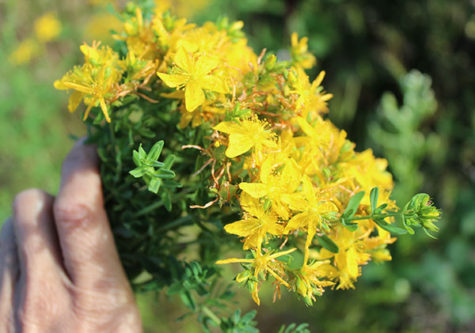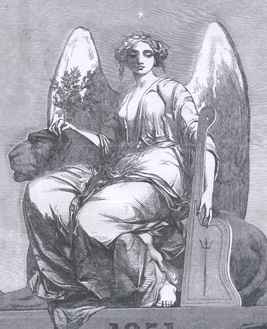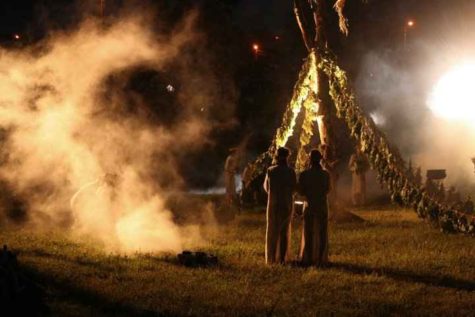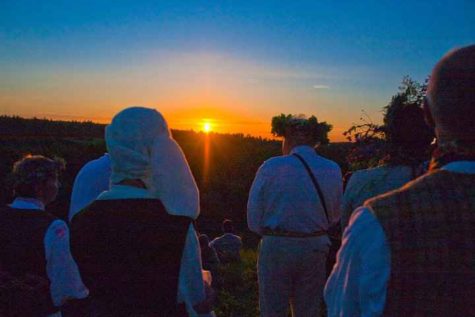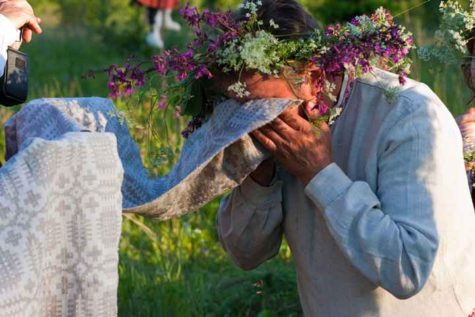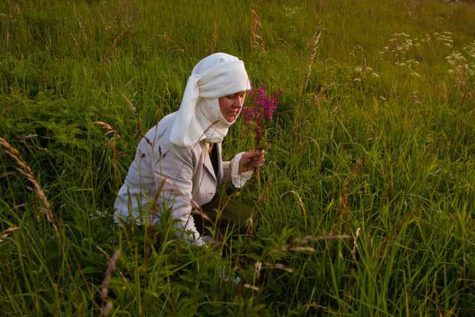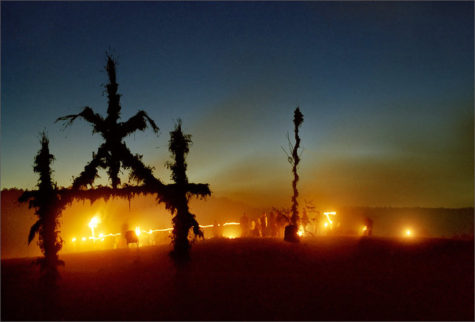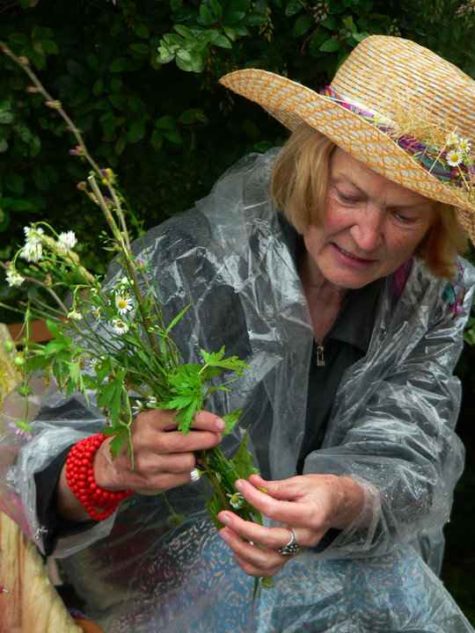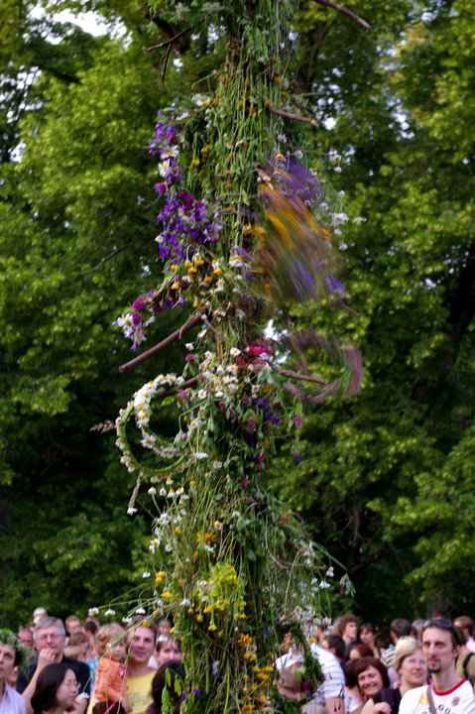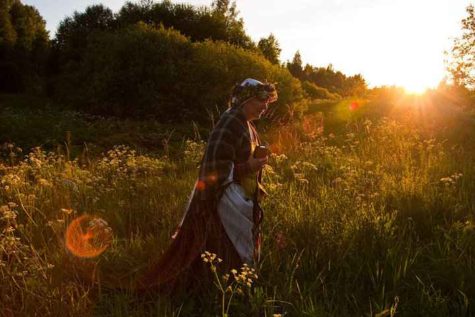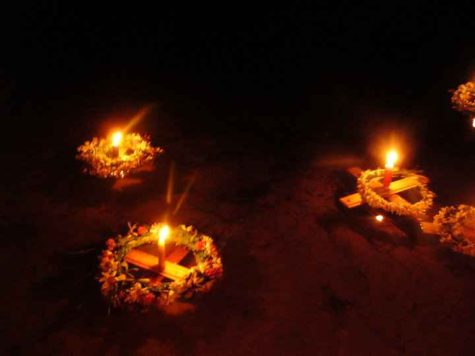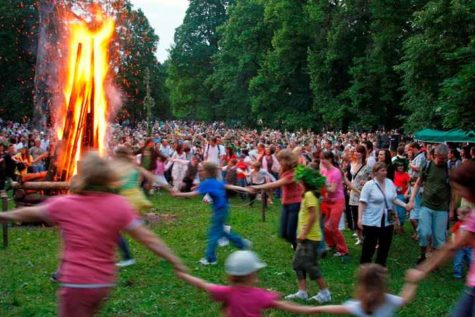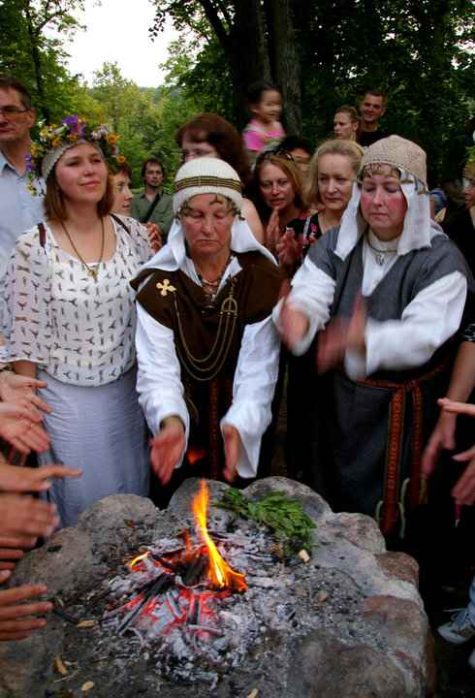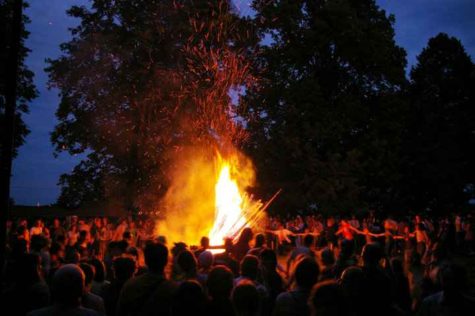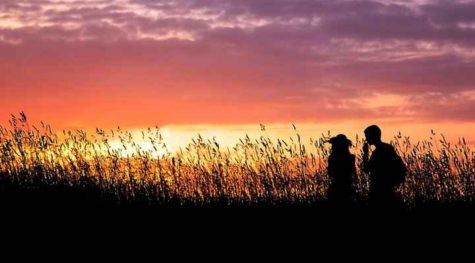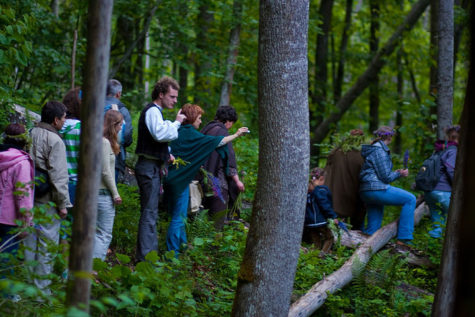Herbs
In the English region of East Anglia, those who continue to follow the ancient ways believe that June 29 is the prime day of the year to harvest herbs for healing use.
Here are some great tips for harvesting herbs:
For the highest quality, herbs should be harvested before the Sun gets too high in the sky. The heat of the Sun will evaporate the essential oil from the herbs, so picking earlier in the day (like by 10:30am) ensures that the highest amount of oils will still be present within them.
When getting plants from the wild, respect the area and plant you are harvesting, never strip a plant bare, never pull it out by the roots to get a few leaves and I always check to see that there are other plants of the same species around and its not some rare almost extinct plant. Also be very sure that the plant you are about to pick is what you think it is, Mother Nature can be very tricky sometimes, and 2 seemingly identical plants can have very different effects when ingested. It is best to ask permission of the plant before taking it’s bounty, and remember, respect, respect, respect!
Transporting your herbs must be done carefully to retain their valuable powers. It’s best to take an open-topped basket or cotton bag with you and some layers of tissue so that herbs can be transported dry and safe back to home, it is pointless seeking out a special plant, than sticking it into a carrier bag in your pocket so it sweats, bruises and it unidentifiable mush by the time you get home.
It is best not to harvest any herbs that have been growing close to the road as the leaves take in the carbon monoxide and poisonous fumes given out by the traffic and take it down into the plant to the root where it becomes stored. Do not pick wild herbs and plants from verges or thoroughfares as this contravenes several laws and also the fact that most areas like these are open to our friendly dog and cat population.
If harvesting wild plants leave a large amount of flowers, seed and root as the plant population of that area will very quickly die out if you go in mob-handed and wrench up the only two plants for miles around.
To harvest herbs in a magickal way visit this post: Harvesting Magickal Herbs in a Magickal Way
The Bona Dea had a festival on the first of May that commemorated the date her Aventine temple was founded. Its date connects her to Maia; its location connects her to Rome’s plebeian commoner class. At the ceremony, prayers were made to Her to avert earthquakes. She also had a secret festival, attended only by women, that took place over the night of the 3rd and 4th of May.
The rites are inferred as some form of mystery, concealed from the public gaze and, according to most later Roman literary sources, entirely forbidden to men.
On this night the festival was held in the house of the consul (the chief elected official), and no men were allowed. This taboo extended even to paintings or statues of men, which were required to be covered during the rites—and one assumes the consul himself crashed at a friend’s place for the night. The Vestal Virgins officiated, led by the wife of the consul (probably symbolic of the ancient Queen, on whom fell certain sacred religious duties), and the house was decorated like a temple with garlands of leaves and flowers of all kinds, except for myrtle of course, and the women wore wreaths of grape leaves.
A great jar of wine was placed in the room, though it must be referred to as “milk”, and the jar itself was called a mellarium, or “honey jar.” After making libations to the Goddess, music was played and the women drank and danced.
In the Republican era, Bona Dea’s Aventine festivals were probably distinctly plebeian affairs, open to all classes of women and perhaps, in some limited fashion, to men. By the Late Republic era, Bona Dea’s May festival and Aventine temple could have fallen into official disuse, or official disrepute.
The goddess also had a Winter festival (see it here), it was held in December during the Faunalia, and was referred to as the sacra opertum, (“the secret or hidden sacrifice”): at this ritual sacrifices were made for the benefit of all the people of Rome, something proper to the realm of a mother or Earth Goddess who is concerned with the well-being of all of Her children.
Ritual for Bona Dea:
- Color: Green
- Element: Earth
- Offerings: Leave a pig-shaped cookie out for the wild things.
- Daily Meal: Soups or stews, preferably with herbs. Herbal tea.
Altar:
Upon a green cloth set five candles in different colors, a chalice of milk mixed with honey, incense of sandalwood and myrrh, the figure of a snake, a plate of cookies shaped like pigs, a pot of medicinal herbal tea, cups, and pots of dried herbs gathered throughout the year.
Invocation to Bona Dea
O Bona Dea,
Good Goddess of the Earth
Whose name is mystery,
Whose name is a hundred names,
Whose spirit lives in us all
And in every goddess who touches the soil,
And in every mortal who sprang from the clay,
Be with us on this day!
You have made the Earth spring forth
With many green goods for us,
Not merely those with which me feed our bellies,
But also those which heal our bodies.
Lady who heals us, godmother of Hygeia,
Daughter of Faunus who tracks in the wild,
We find your gifts both in our gardens
And on the wild paths where you have trodden.
We see the healing herbs springing up
In each of your passing footprints,
And we are grateful for our lives.
O Bona Dea,
Good Goddess of the Earth
Whose name is mystery
But whose gifts are so concrete,
We revere you and ask that you bless this day
Your plants which you have so generously given us,
That we may always be healed
And always help to heal others.
The names of the herbs that were collected and placed on the altar are called out one by one, in this manner:
“For the power of Rosemary, we are grateful!”
All reply in turn, “We are grateful!”
Pass the tea and cookies and eat them.
Sources: Pagan Book of Hours and Wikipedia
From ancient times people marked the time of the return of the sun, the shortest and longest night. In olden times it was called the Feast of the Dews- Rasos. When Christianity was established in Lithuania, the name was changed to Feast of St. John, according to agrarian folk calendar, the start of haying.
The rituals of the longest day were closely related to agrarian ideas and notions. The main aim was to protect the harvest from natural calamities, evil souls, witches and mid summer visitors like drought, hail, downpours of rain and thunder.
In the 15th century, visitors to Lithuania wrote that in Vilnius, the celebrations took place in the eastern section of the city, the place of the present day “Rasos” cemetery. Fires were lit on hills and in dales. People danced, sang, ate and drank. On the Feast of St John a special role was granted to the sun. The sun is constantly mentioned in songs sung on the longest day of the year.
On this ritual day, farmers paid special attention to water’s special powers in reviving soil and making it productive. Witching on this day were carried out near and with water, people washed themselves and their animals. Special attention was paid to the dew because it revives plants at night. At sunrise farmers made their way around the fields, pulling a branch which brushed the dew to fall into the soil and cause a good harvest.
Maidens tried to get up before sunrise, collect the dew and wash their faces with it to make them bright and beautiful. They would also get up at night, go outside to wet their faces in the dew and returned to bed without wiping their faces dry. If that night they dreamt of a young man bringing them a towel, they hoped that he would be the one they would marry.
Flourishing plants were worshiped because it was believed that plants collected on the eve of the Feast of St. John posses magic powers to heal, bring luck and foretell the future. This is an ancient ritual practiced mainly by women. Roses, common daisies, especially the herb St. John’s worth and numerous grasses were some of the main plants collected at this time.
A festival pole, decorated with flowers and greenery was called “Kupolė”. Folklore shows that “Kupolė” was the Goddess of plants, living in aromatic plants, blossoms or in buds in summer and in snowdrifts in winter.
In Lithuania Minor, even in winter before the Feast of St. John, women made haste to collect medicinal herbs, with the belief that after June 24th all herbs lose their healing powers.
Girls returned to the village after picking flowers and singing, wreathed the festival post, “Kupolė”, and added colorful fluttering ribbons to it. This festival post was set at the far end of the village, near the grain fields. It had to be defended during two days and nights from young men who tried to steal it.
After saving the post, the girls removed the decorative herbs and grasses and divided them amongst themselves because these herbs had special protective powers against evil spirits and illnesses.
In some regions bunches containing nine plants were gathered by women on the eve of the Feast of St. John. Some of the plants were fed to animals before midnight, so they would be protected from evil eyes. Bunches of St. John’s worth were placed behind pictures of saints. If this bunch did not wilt fast, it was believed that it will be a lucky year.
It was believed that wreaths concentrate perpetual life’s forces and are symbols of immortality and life. There were many rites and witching’s associated with wreaths during this longest summer’s night.
Walk around three fields and gather bunches of nine flowers, twine a wreath and place it under your pillow. You will marry the man, who in your dream comes to take away the wreath. At midnight, twelve wreaths were dropped into a river and observed if they were pairing off. If no pairing off occurred, there was to be no marriage that year.
Near the river Nemunas, wreaths were dropped in the water, only when the river was calm and observed to which direction they drifted. Matchmakers would come from that direction. Releasing the wreath with the current, it will be caught by a young man, the maiden will be his. Should the wreath float away without being caught, the maiden will keep that wreath all year in her dowry chest, as a symbol of luck and health.
In the seacoast region, all during the night, young men and women twined wreaths from ferns, placed candles and set them in streams. Should both their wreaths swim together, they believed that they would marry that year.
In some regions wreaths twined during the night of the Feast of St. John were placed at crossroads with the belief that ones future will be seen in a dream.
The rites of this day continued till sunrise around bonfires. The site selected for ritual bonfires was always in the most beautiful area, on hills, on river shores and near lakes. In some regions bonfires were lit on future grain fields and under linden trees.
Those who are not fond of socializing on the eve, hurry and gather along lake shores, light bonfires, place burning poles, covered with tar into trees, so that there would be light all night long until sunrise. Special decorated wheels were lit and were rolled down hillsides, this symbolized the sun’s moving away from the earth and at the same time a request for her return.
In ancient times, the ritual fires were lit by senior priests, “vaidilos”. That fire was started with sparks coming from rubbing dried roots of medicinal herbs or from flying sparks when striking flint stones. Such fires would protect from epidemics, illnesses, poor harvests, hail and lightning.
Eggs were thrown into the fires and animals sacrificed. Later straw dolls were sacrificed in place of animals.
The ritual fires were built up to throw their light over a large area of fields, to assure a big autumn harvest. On the eve of this feast day, home fires were put out and new fires were lit using glowing coals from the ritual fires of that day.
It was believed that these ritual fires had special powers, which would protect from misfortunes, bring health and harmony to the family. It was important for newlyweds to light the fire in their hearth with the coals of the miraculous ritual fire. Such a family would be blessed, live well and in total harmony.
Jumping over fires or around it had magic meaning. Ritual bonfires cleansed both physically and psychologically. Sick adults and children were brought to the ritual fires and were pulled through the fire, with the belief that they would be healed. Jumping over the fire was carried out with the belief of making better health, increasing body strength for hard summer labors and assuring better growth of grain and flax.
Ritual fires’ ashes, smoldering coals had special powers to increase the harvest and protect it from natural calamities. The coals were dug under in fields; ashes were sprinkled on crops to assure good crop yields. To keep weeds from growing in grain fields, ritual fires’ wood splinter remains were tied to the plough share when ploughing the fields.
The feast of St. John is connected with summer weddings and their rituals which were bound to affect family living and population increases. Should a pair become friends this night, there will definitely be a wedding.
The night of June 24th is the shortest night of the year, filled with bird sounds and luxuriant vegetation. Darkness substitutes light unnoticeably, night is full of miracles due to fire reflections and shadows. It was believed that activity during this night of supernatural creatures or female witches was ill disposed towards men, animals and plants. To keep animals from their malevolent actions, animals were put in barns before sunset and were fed bread with salt for protection. Mountain ash branches and wheat sprays were hung on door posts for protection against evil spirits
In some regions clogs were placed in front of a mirror. Witches would step into the clogs and run away upset by their frightful image in the mirror.
“Šatrija” was the most famous witches’ hill, where during the night of the Feast of St. John, witches party and rage all night and invent all kinds of enchanting. This is why one could not do without “witches’ burnings”. Young people tied a barrel filled with tar and sawdust to a high pole, sprinkled it with salt so that the witches would crackle. The barrel was set on fire while the young people sang and danced merrily. Next morning the cow herd was driven through the remaining ashes, with the belief that witching’s will no longer be harmful.
During the night of the Feast of St. John, the miraculous fern bursts into bloom. It is difficult to catch sight of this bloom; however this difficulty can be overcome by going to the forest the day before, cutting down a mountain ash, pruning the branches and cutting off the top. Then pulling the tree backwards, walk about one hundred steps without looking back, toward the side to which the cut tree fell.
Look back after the hundred steps and then you will see the devil sitting stuck in the ash tree. The devil will ask for your help to get off the tree and for your help will tell you where to find the blooming fern. When you locate the blooming fern, ghosts will attack with butting horns whirlwinds will howl and cats will cry. Then take a cane made of mountain ash, draw a circle around you with it, spread a linen cloth and stop being afraid. The fern blossom will fall on the cloth. Some say that the fern bloom is like birch dust, others describe it as round and white like carp’s scale.
Prepared by: http://ausis.gf.vu.lt/eka/
Photos by: Gintaras Jaronis, Vytautas Darasevičius, Leonardas Šidlauskas and A. Kiričenko.
